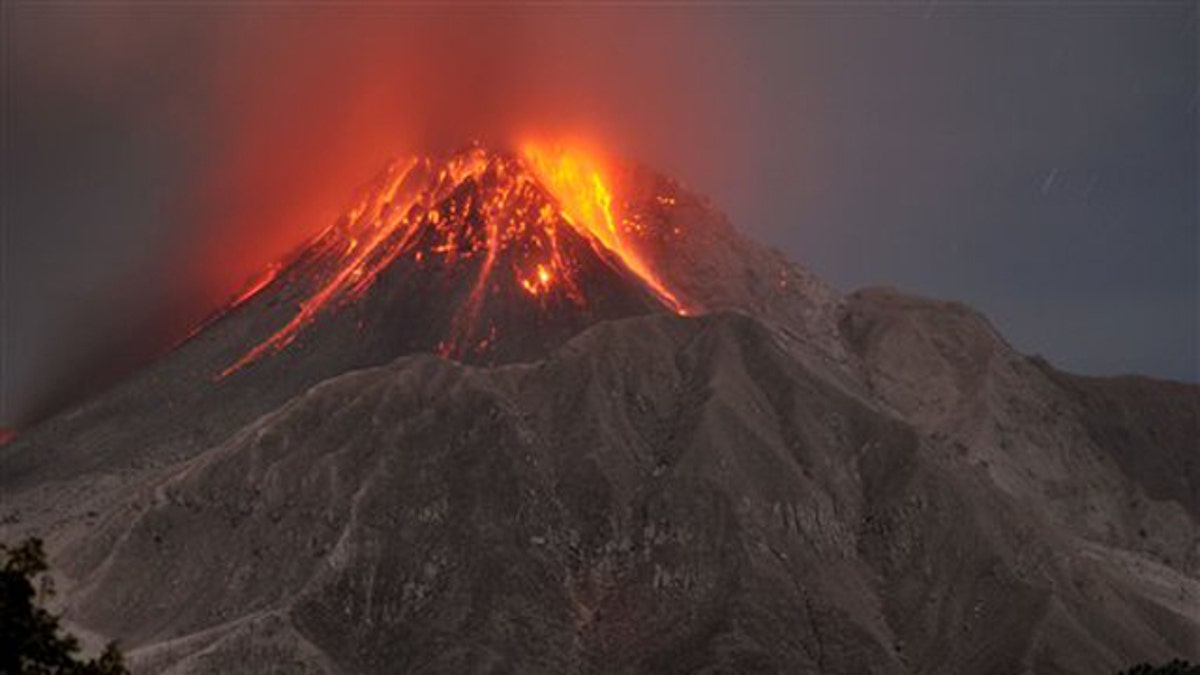
Jan. 23, 2010: The Soufriere Hills volcano erupts in the Caribbean island of Montserrat. (AP)
There will be an unexpected sight high in the skies over the British county of Norfolk next month: a huge balloon attached to the ground by a giant hosepipe.
It isn't obvious, but it is the first small step in an experiment which aims to re-create the cooling effect of erupting volcanoes on the earth's atmosphere.
Scientists and engineers from the universities of Bristol, Cambridge and Oxford are behind the three-year, 1.6 million pound ($2.5 million) project called Stratospheric Particle Injection for Climate Engineering (SPICE).
The scheme will assess the feasibility of so-called solar radiation management (SRM) by mimicking volcanoes when they erupt. Eruptions can both warm and cool the Earth's climateFix, depending on how sunlight interacts with volcanic material.
SRM works on the assumption that some eruptions expel particles into the upper atmosphere, bouncing some of the sun's energy back into space and thereby cooling the earth.
"In 1991, a large eruption at Mount Pinatubo injected around 18 million tons of SO2 (sulphur oxide) to a 30-km altitude," project leader Matt Watson told reporters.
"That had the effect of cooling the global climate by around half a degree over two years."
KILOMETERS OF HOSEPIPE
Next month's experiment, to be held at a disused airfield in Sculthorpe in north Norfolk, will pump water through a 1-km hosepipe into an air balloon to test the engineering design and the effects of wind.
If there are no hiccups, the team aims to do more 1-km tests next year. It will also work on calculating and designing a potential full-scale balloon project, which would pump sulphates and aerosol particles instead of water.
That would require a 20-km pipe strong enough to pump sulphates to a balloon the size of Wembley football stadium -- at twice the height of a commercial aircraft flight.
However, the size of the balloon and strength of the pipe required are serious engineering challenges.
"Even manufacturing a hose 1 km in length is a challenge, but we are talking about a hose stronger than any built before," said Chris Walton, SPICE project trials advisor.
Some countries are exploring geo-engineering solutions as a way to control climate change by cutting the amount of sunlight hitting the earth or by capturing greenhouse gases.
Potential schemes include using artificial trees to soak up carbon dioxide, using mirrors in space to cut the amount of sunlight reaching the earth or capturing CO2 from power stations and burying it under ground.
Supporters say such solutions could be a relatively fast way to control the climate if there was an abrupt change, such as the sudden loss of Arctic ice.
Detractors say the impact of mimicking or manipulating nature on a large scale is not yet fully known and such projects might deflect resources and attention from proven technologies.
Most of these solutions are still far from being established at large scale.
"With strong government support and in an emergency situation...the fastest we could deploy this system is two decades," Watson told Reuters, adding that a minimum 10 to 20 balloons globally would be needed to reduce atmospheric temperature by 2 degrees.




















